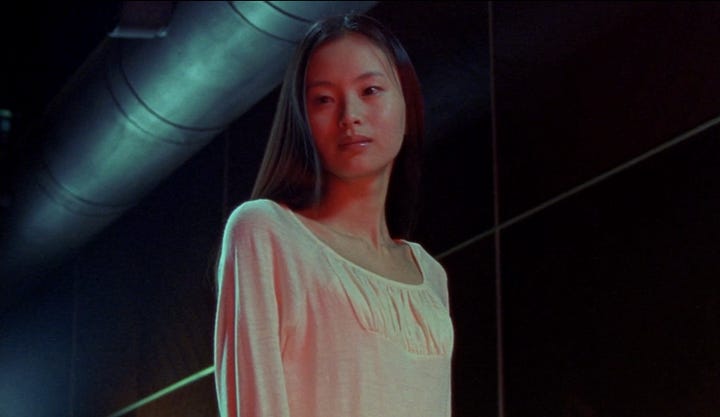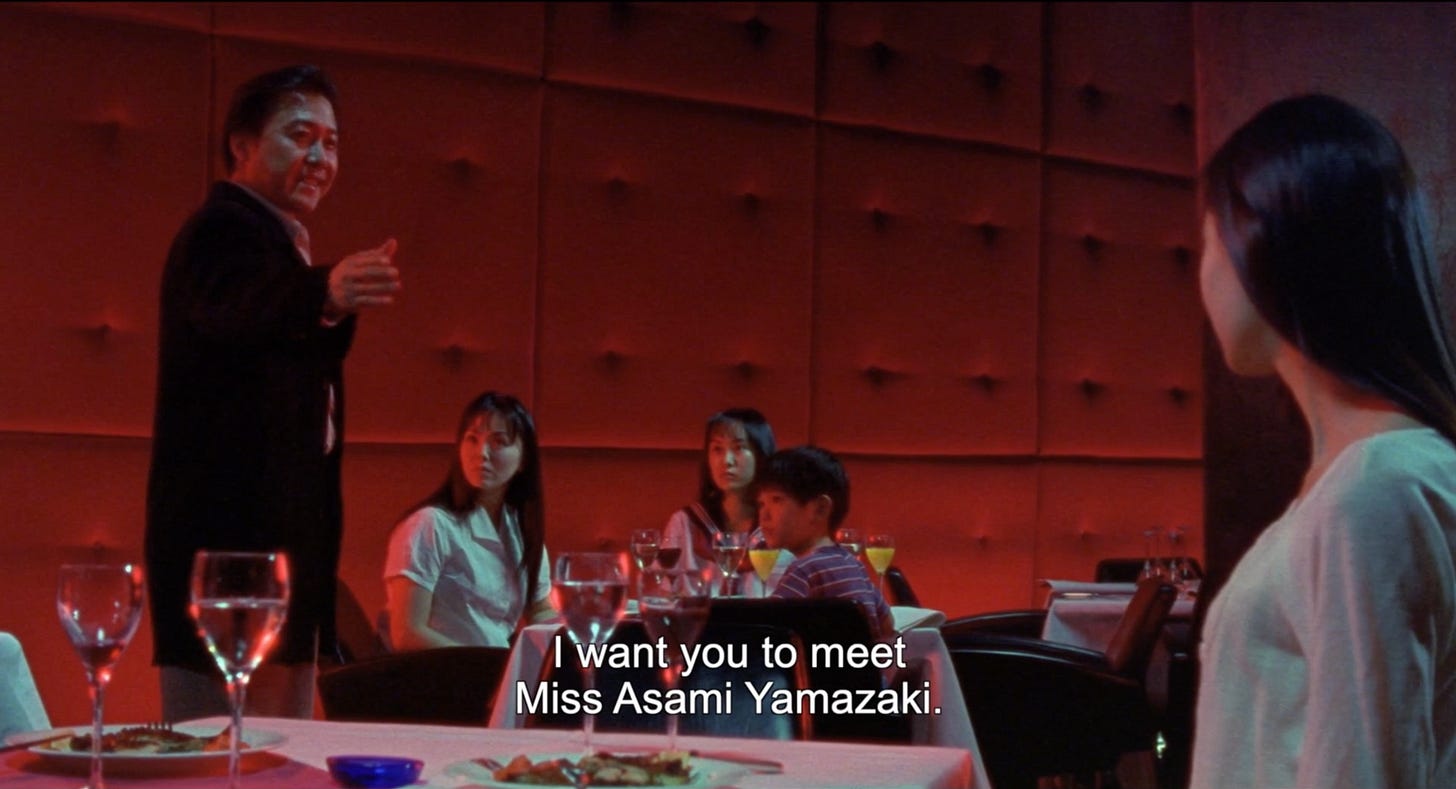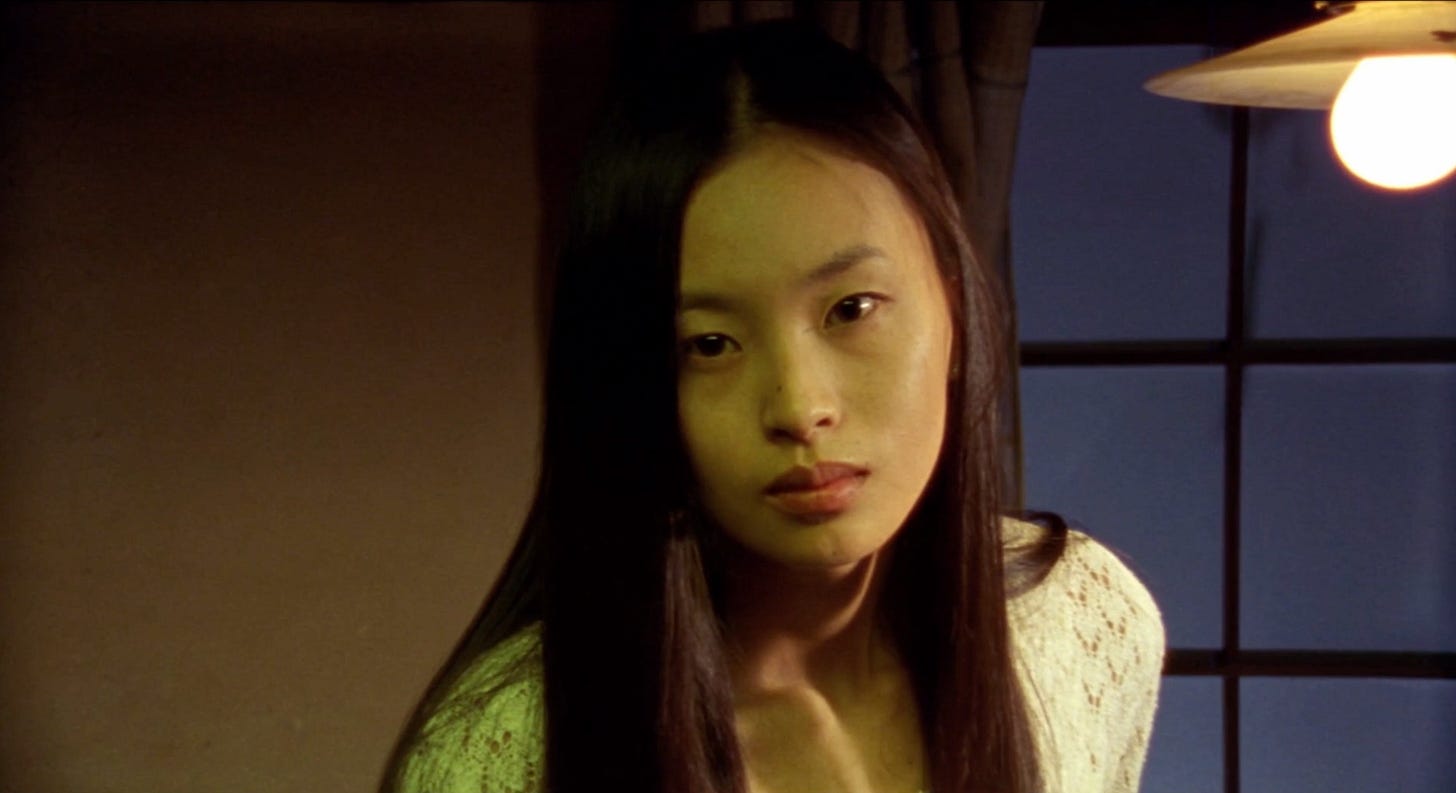Audition (1999) was shot in about three weeks, with a not-significant budget. Shooting mostly on location with simple setups allow budget stretching, and you can see where money goes into specific props and effects shots to make tremendous impact. But ‘simple setups’ can still be impactful!
Audition contains many smaller, beautifully thematic shots and transitions, such as this match cut. Let’s look at three components which make this cut work: thematic connection, motion, and colour.
because Audition is somewhat infamous, let us note there’s absolutely no violence or gore in this clip
Thematic Connection
Aoyama (Ryo Ishibashi) opens telling Asami (Eihi Shiina) “you’re wonderful, I want someone like you.” We don’t see Asami’s reaction to this declaration; instead we hear “Darling?” offscreen.
Aoyama turns, then the scene cuts so we see his wife Ryoko (Miyuki Matsuda), as well as his younger son Shigehiko, both of whom we met at the start of the film seven years prior. Because Shigehiko is older now, and Ryoko died of natural causes before Aoyama met Ryoko, we realise this is a dream.
Aoyama acknowledges Ryoko, gets up and addresses her as the scene cuts to a wide.
Asami and Ryoko are connected through Aoyama speaking to them both before we get a shot of them together in context. We understand the connection is wholly through Aoyama.
After this one wide they aren’t shown in the same frame again, the three adults all shot in singles; all separate in their own frames.
To end the scene, the match cut makes the connection between Asami and Ryoko literal, as the latter ‘transforms’ into the former with motion. It’s not just a cool camera and edit trick, it’s visually demonstrating the theme.
Motion
Asami stands once within the scene [0:30-0:34], the camera tilting to look up as she rises to underscore how Asami looks down on Ryoko.
The match cut also uses Asami in a rising movement, which further strengthens this connection: Asami’s motion, framing, and end position are similar in both shots.
Another great touch is how the sound mix really distinguishes between Ryoko and Asami and the restaurant and apartment locations, even as Ryoko and Asami’s short appeals to Aoyama could form one complete sentence: “Darling . . . I want you.”
Colour
In the restaurant, the dominant colour behind Asami is blue, behind Ryoko is red, while both of them have the opposite colour as accent light on their face,
Meanwhile, Aoyama is clearly caught between both red and blue; sometimes framed and lit like Asami, sometimes like Ryoko.




The match cut going from red to yellow — a colour not featured in the restaurant — clearly signals to us that we’re in the next scene.
Once we’re in the next scene, it quickly cuts to Aoyama so we know we’ve made a full time/place switch and are continuing in this scene/space.
That there’s significant use of blue in the new scene is beautiful, yes, but blue framing was Asami’s dominant frame colour in the restaurant, so it suggests she is in control here, too.
Takeaways
Match cuts don’t always need to be ‘set up,’ they can work on their own.
But in a film with dream logic — and particularly, one with a character (Ryoko) whom we’ve only seen once before, an hour ago by this point — it’s helpful to set up these kinds of edits with signifiers, and/or make sure the scenes on either side look distinct, so there’s no confusion with the cut.
Creative and beautiful edits also don’t need to “visually demonstrate how this man is artificially attempting to ‘replace’ a dead wife with a new model who literally looks down on said wife, and him” but if you can pack that much significant into one shot it’s a real cherry on top!





